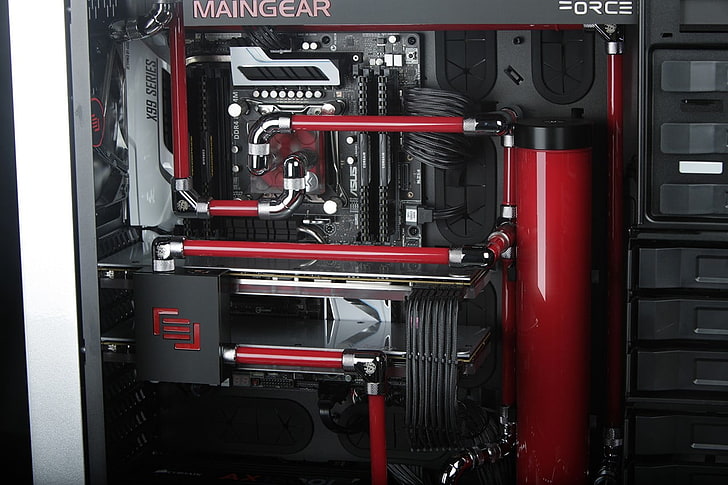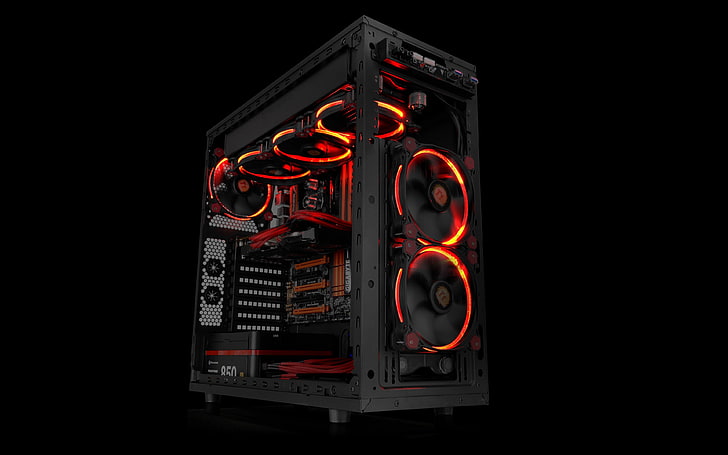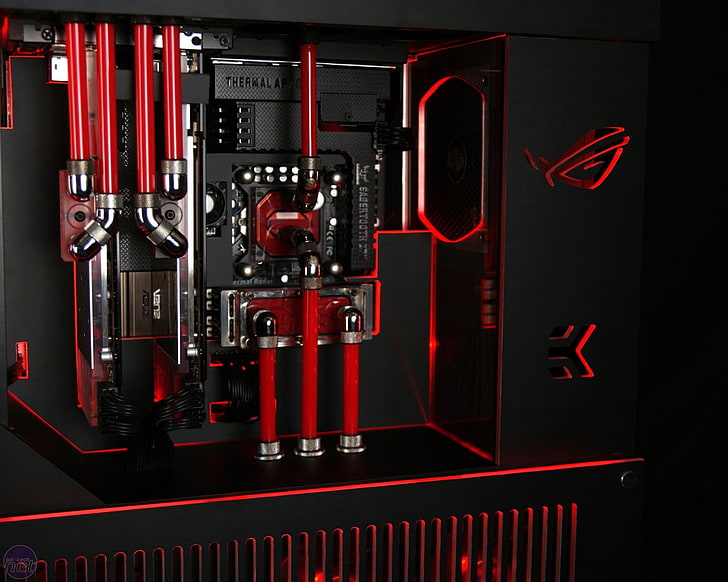pc g marks a transformative era in the gaming landscape, where high-performance setups and immersive experiences have become the norm. Over the past twenty years, PC gaming has evolved remarkably, integrating cutting-edge technology that revolutionizes how players interact with their favorite titles. From sophisticated hardware components to an expansive array of genres, the world of PC gaming offers unparalleled diversity and innovation.
As enthusiasts delve into building their custom gaming PCs, they unlock a realm of possibilities tailored to their playstyle. The journey entails selecting the best components, understanding the benefits of a bespoke setup, and utilizing essential tools that enhance the overall experience. With a focus on maximizing performance through accessories and optimized settings, gamers can elevate their gameplay to new heights.
Overview of PC Gaming

PC gaming has undergone a remarkable transformation over the past two decades, evolving from humble beginnings to a multifaceted entertainment platform that rivals, and in many cases surpasses, traditional gaming consoles. From the early days of pixelated graphics and basic gameplay mechanics to the stunning visuals and immersive experiences of today, the journey of PC gaming is a testament to technological advancement and the ever-increasing demands of gamers. These developments have not only shaped the types of games available but also how players interact with them on a global scale.
The backbone of high-performance gaming lies in its core components. A well-assembled gaming PC is essential for ensuring a smooth and responsive gaming experience. Key components include the central processing unit (CPU), which acts as the brain of the system; the graphics processing unit (GPU), responsible for rendering high-quality graphics; sufficient random-access memory (RAM) for multitasking; and storage options such as solid-state drives (SSDs) for faster loading times. Additionally, a reliable power supply unit and a cooling system are vital to maintain performance during extended gaming sessions.
Key Components of a High-Performance Gaming PC
Understanding the essential components of a gaming PC is crucial for both aspiring builders and seasoned gamers alike. Each part plays a specific role in ensuring optimal performance.
- CPU: The CPU is pivotal for overall system performance, affecting everything from frame rates to game loading times. Popular choices include AMD Ryzen and Intel Core processors.
- GPU: The GPU is imperative for rendering graphics. High-end options like the NVIDIA GeForce RTX series or AMD Radeon RX series offer exceptional graphics capabilities.
- RAM: A minimum of 16GB is recommended for most modern games, while 32GB can benefit users who multitask or stream while gaming.
- Storage: SSDs provide significantly faster load times compared to traditional hard drives, enhancing the overall gaming experience.
- Cooling System: Effective cooling solutions, such as air or liquid cooling, help to prevent overheating during intense gaming sessions.
- Power Supply: A reliable power supply unit ensures all components receive adequate power, which is crucial for system stability.
Genres of Games Available on PC
The breadth of genres available on PC is one of the platform’s greatest strengths. Each genre comes with its own unique features and gameplay mechanics, catering to diverse player preferences.
- Action Games: Fast-paced and often requiring quick reflexes, action games like “DOOM Eternal” showcase intense combat and stunning visuals.
- Role-Playing Games (RPGs): RPGs like “The Witcher 3: Wild Hunt” offer expansive worlds, rich storylines, and character development.
- Strategy Games: Titles such as “Civilization VI” allow players to develop tactics and make strategic decisions, often with a heavy emphasis on resource management.
- Simulation Games: Games like “The Sims” and “Microsoft Flight Simulator” provide players with realistic simulations of real-life activities or scenarios.
- Multiplayer Online Battle Arena (MOBA): Games such as “League of Legends” focus on team-based gameplay, requiring cooperation and strategy among players.
- First-Person Shooters (FPS): FPS games, including “Counter-Strike: Global Offensive,” emphasize player skill in aiming and shooting from a first-person perspective.
“The evolution of PC gaming reflects not only technological advancements but also cultural shifts in how we experience and share gameplay.”
Overall, the combination of powerful hardware, a vast array of game genres, and an ever-evolving gaming community makes PC gaming a dynamic and engaging platform for gamers around the world.
Building a Custom Gaming PC

Crafting a custom gaming PC is one of the most rewarding experiences for gamers and tech enthusiasts alike. This endeavor allows for a tailored gaming experience, optimizing performance to meet personal preferences and gaming needs. With the right knowledge and components, anyone can build a machine that rivals the best pre-built systems on the market.
Building your own gaming PC offers several advantages over purchasing a pre-built unit. Customization is the most significant benefit, as you can select each component according to your needs, budget, and future upgrade potential. Additionally, it often proves to be more cost-effective, allowing you to allocate funds more efficiently across crucial hardware. Moreover, assembling your own machine provides a deeper understanding of the technology, enhancing your skills and ensuring you can troubleshoot issues down the line.
Selecting the Best Hardware for a Gaming PC
When building a gaming PC, the selection of hardware is paramount. The following components are essential for achieving optimal gaming performance:
1. Central Processing Unit (CPU): The CPU acts as the brain of the computer, driving overall system performance. Look for models with higher clock speeds and multiple cores to handle demanding games effectively.
2. Graphics Processing Unit (GPU): The GPU is crucial for rendering graphics and is often the most significant investment in a gaming PC. Select a GPU that aligns with your gaming resolution and desired frame rates.
3. Motherboard: Choose a motherboard that is compatible with your CPU and offers enough expansion slots for future upgrades. Pay attention to features such as Wi-Fi capabilities and USB ports.
4. Memory (RAM): For gaming, 16GB of RAM is generally considered the sweet spot, although 32GB may be beneficial for multitasking or gaming while streaming.
5. Storage: A solid-state drive (SSD) is recommended for faster load times and improved system responsiveness. A combination of SSD for the operating system and a larger hard disk drive (HDD) for games can strike a balance between speed and storage capacity.
6. Power Supply Unit (PSU): Ensure that the PSU can deliver enough power for all components, with some additional headroom for future upgrades. Look for a unit with an 80 Plus certification for efficiency.
7. Cooling Solutions: Depending on your CPU and GPU, you may need aftermarket cooling solutions to prevent overheating during intense gaming sessions. Options include air coolers and liquid cooling systems.
Advantages of Building a Gaming PC, Pc g
Building your own gaming PC presents numerous benefits:
– Customization: Tailor every aspect to match gaming preferences, from aesthetics to performance specifications.
– Cost Savings: Often, building a PC can be less expensive than buying pre-built systems, especially when factoring in performance-to-cost ratios.
– Upgrade Potential: A custom-built PC is easier to upgrade over time, allowing you to stay current with gaming technology without needing to replace the entire system.
– Knowledge and Experience: The process of building a PC enhances technical skills, providing insight into how each component interacts within the system.
Essential Tools and Peripherals for Assembling a Gaming Setup
Having the right tools and peripherals is vital when assembling a gaming PC. Below is a list of essential items that will aid in the building process:
– Screwdriver Set: A quality set, particularly with magnetic tips, will make handling screws easier and prevent loss during assembly.
– Anti-Static Wrist Strap: Protects sensitive components from static electricity that can cause damage.
– Cable Ties: Useful for managing cables neatly, improving airflow, and aesthetics within the case.
– Thermal Paste: Required for optimal thermal conductivity between the CPU and cooler, ensuring efficient heat dissipation.
– Case Fans: Additional fans can improve airflow within the case, contributing to effective cooling.
– Monitor, Keyboard, and Mouse: Essential peripherals for interfacing with the system, with options available to suit any gamer’s preference.
– Operating System Installation Media: Ensures that the PC can run software and games properly after assembly.
Building a custom gaming PC is more than just an assembly task; it’s an exciting project that, when done correctly, yields a powerful and tailored system that meets your gaming aspirations.
Enhancing the Gaming Experience: Pc G

The gaming experience can be significantly improved through various accessories and optimizations, making your gameplay more enjoyable and immersive. This segment delves into the essential gaming accessories, software optimization techniques, and the impact of various gaming resolutions and refresh rates on performance.
Gaming Accessories for Improved Gameplay
Incorporating the right gaming accessories can elevate your gameplay, providing comfort, precision, and an overall enhanced experience. The following accessories are vital for gamers seeking to maximize their potential.
- Gaming Mouse: A high-DPI gaming mouse with customizable buttons allows for precise movements and quick access to commands.
- Mechanical Keyboard: Keyboards equipped with mechanical switches offer tactile feedback and faster response times, which are crucial for competitive gaming.
- Gaming Headset: A quality headset enhances audio clarity, providing an immersive experience while also allowing for effective communication with teammates.
- Monitor with Low Input Lag: A monitor designed for gaming minimizes input lag, allowing for faster reaction times and smoother gameplay.
- Gaming Chair: Ergonomically designed chairs provide comfort during long gaming sessions, reducing fatigue and improving concentration.
Optimizing Software Settings for Better Performance
Adjusting software settings can dramatically enhance gaming performance, ensuring a smoother and more responsive experience. Key aspects to consider include:
– Graphics Settings: Lowering the resolution and adjusting texture quality can help in achieving higher frame rates. For instance, playing at 1080p rather than 1440p can yield significant performance boosts on mid-range graphics cards.
– V-Sync Options: Enabling or disabling V-Sync can impact frame tearing. Disabling it can lead to a more fluid experience, although it may introduce tearing.
– Game Mode in Windows: Activating Game Mode in Windows prioritizes system resources for the game, improving performance by reducing background activity.
– Driver Updates: Keeping your graphics drivers up to date ensures compatibility with the latest games and optimizes performance.
“Performance tuning software can manage background processes to free up CPU cycles, allowing for more efficient gameplay.”
Comparing Gaming Resolutions and Refresh Rates
Understanding different gaming resolutions and refresh rates is crucial for optimizing gameplay. Each combination affects visual quality and responsiveness, influencing overall performance.
– Resolution Options:
– 1080p (1920 x 1080): The standard for most gamers, balancing performance and visual clarity.
– 1440p (2560 x 1440): Offers better detail than 1080p but requires more powerful hardware.
– 4K (3840 x 2160): Provides stunning visuals but necessitates a high-end graphics card and may reduce frame rates.
– Refresh Rates:
– 60 Hz: Common for standard gaming, suitable for casual play but may not provide the best responsiveness.
– 120 Hz: Ideal for competitive gaming, offering smoother visuals and quicker response times.
– 144 Hz and 240 Hz: These high refresh rates are favored by professional gamers, providing an ultra-smooth experience that can be decisive in competitive scenarios.
“Higher refresh rates can provide a competitive advantage by displaying more frames per second, leading to smoother motion clarity.”
Each of these elements contributes significantly to enhancing the gaming experience, allowing players to tailor their setups for optimal enjoyment and performance.
Final Conclusion
In summary, the evolution of pc g illustrates not just the technological advancements but also the passion behind gaming culture. By embracing the process of building personalized gaming rigs and enhancing gameplay through various accessories, players can truly appreciate the depth and excitement that PC gaming has to offer. As we look to the future, the potential for innovation and engagement in the pc g realm continues to grow, promising thrilling experiences for gamers everywhere.

